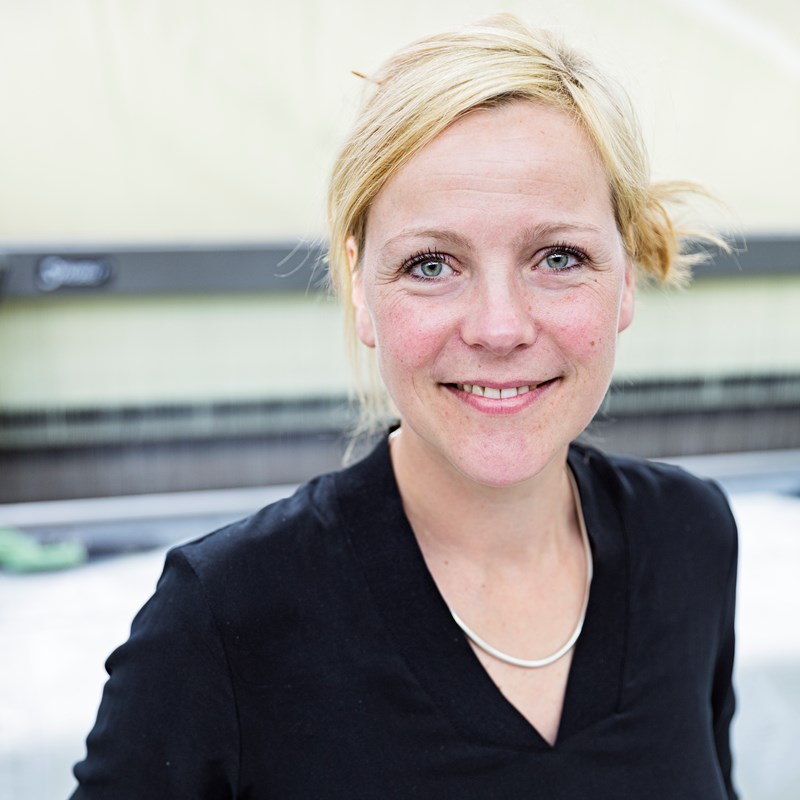Years of research preceded Studio Samira Boon’s innovative 3D textile structures, inspired by Japanese origami techniques. A commission from the TextielMuseum led to ‘Super Folds’: complex self-folding textiles produced through a careful combination of yarn and weave. ‘Archi Folds’ are the continuation of ‘Super Folds’ and can be applied on an architectural scale.
Designer Samira Boon has worked with the TextielLab since 2013 to develop textile structures inspired by the Japanese paper-folding art of origami. What began as a collection commission ultimately gave rise to ‘Super Folds’: complex self-folding textiles produced through a careful combination of yarn and weave. Once removed from the loom, the textiles assume the pre-programmed folds, creating a 3D structure.
The results of the initial commission were so promising that a joint research project was launched as part of the ‘Building with Textiles’ R&D programme to explore the concept further. The aim is to increase the scale of current ‘Super Folds’ prototypes, creating reproducible room dividers to define spaces in a flexible way while also improving the acoustics. The challenge is to make the woven 3D fabric lightweight and increase the firmness of the flat planes while keeping the folds flexible and tight. In addition, an alternative must be found for the elastane currently used in the weft, as this has a limited lifespan.
The first ‘Archi Folds’ were integrated in Theaters Tilburg, which was looking for a dynamic, flexible design solution for its Audax room. The ‘Archi Folds’ serve as room dividers and can be folded and unfolded as necessary, altering the size, feel, perspective and acoustics of the space.
Research began by analysing the two folded structures already developed: ‘Miura Fold’ and ‘Yoshimura Fold’. The ‘Miura Fold’, a regular pattern of folds, offers interesting spatial applications. Different samples were made. The sample with the stiff monofilament warp and a weft of elastic monofilament gave the best result: a lightweight fabric with firm supporting planes and elastic folds. This was the first time that the TextielLab had used a monofilament warp, and so external specialists were brought in for the warping and tying. The new warp was then threaded in by the weaver. To find the best combination of warp and weft, tests were done with various yarns and folds. In addition to technical research, different visual effects were also explored. The yarns that were the best functionally, such as monofilament and fusible bonding yarn, are transparent, white or grey, creating a technical look. Mohair, acrylic or paper (raffia) yarns have a broader colour spectrum and materiality. The two most promising samples were scaled up to a length of 12 metres and a width of 1.70 metres – the maximum width of the loom.












Boon trained as an architect at TU Delft and spent several years in Japan. There, she became fascinated by the 3D-folded structures in origami. In recent years, she has focused increasingly on innovative textile products and interior applications, with a particular interest in 3D structures. She creates her ‘Super Folds’ designs using Illustrator software. For more complex and irregular folding patterns, she uses a program developed by a Japanese mathematician. Boon has won numerous awards with her innovative textiles, including the Creative Heroes Award in 2017 and the Architizer Award in 2018.
